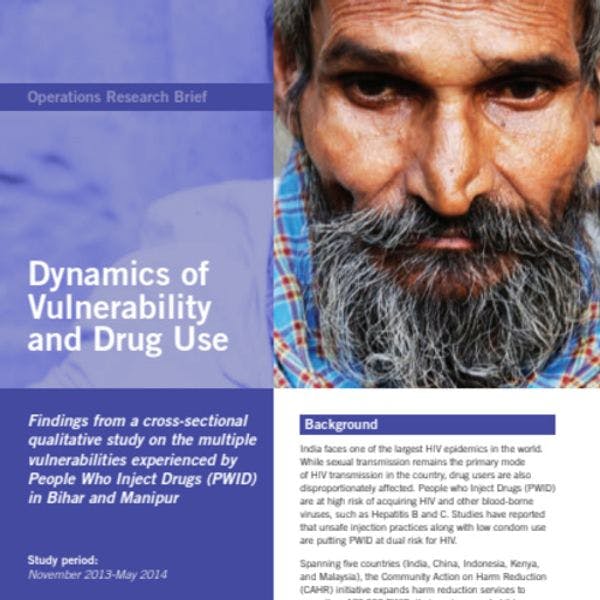Dynamics of vulnerability and drug use in India
Findings from a cross-sectional qualitative study on the multiple vulnerabilities experienced by People Who Inject Drugs (PWID) in Bihar and Manipur
India faces one of the largest HIV epidemics in the world. While sexual transmission remains the primary mode of HIV transmission in the country, drug users are also disproportionately affected. People who Inject Drugs (PWID) are at high risk of acquiring HIV and other blood-borne viruses, such as Hepatitis B and C. Studies have reported that unsafe injection practices along with low condom use are putting PWID at dual risk for HIV.
Spanning five countries (India, China, Indonesia, Kenya, and Malaysia), the Community Action on Harm Reduction (CAHR) initiative expands harm reduction services to more than 180,000 PWID, their partners and children. The programme protects and promotes the rights of these groups by fostering an enabling environment for HIV and harm reduction programming in these five countries. CAHR is supported by the Ministry of Foreign Affairs, Government of Netherlands.
In India, CAHR is called ‘Hridaya’ and is implemented by India HIV/AIDS Alliance in partnership with community based harm reduction organisations, non-governmental organisations and networks. This programme helps build the capacity of service providers, makes harm reduction programmes more gender-responsive, improves access to services and advocates for the rights of PWID. In addition to providing services, Hridaya has a strong capacity building component to support advocacy, knowledge management and improved services for PWID.
A cross-sectional qualitative study was conducted to gain in-depth knowledge on multiple vulnerabilities to HIV acquisition among PWID in the states of Bihar and Manipur who may practice unsafe injecting practices and unsafe sexual behaviours.
Keep up-to-date with drug policy developments by subscribing to the IDPC Monthly Alert.
